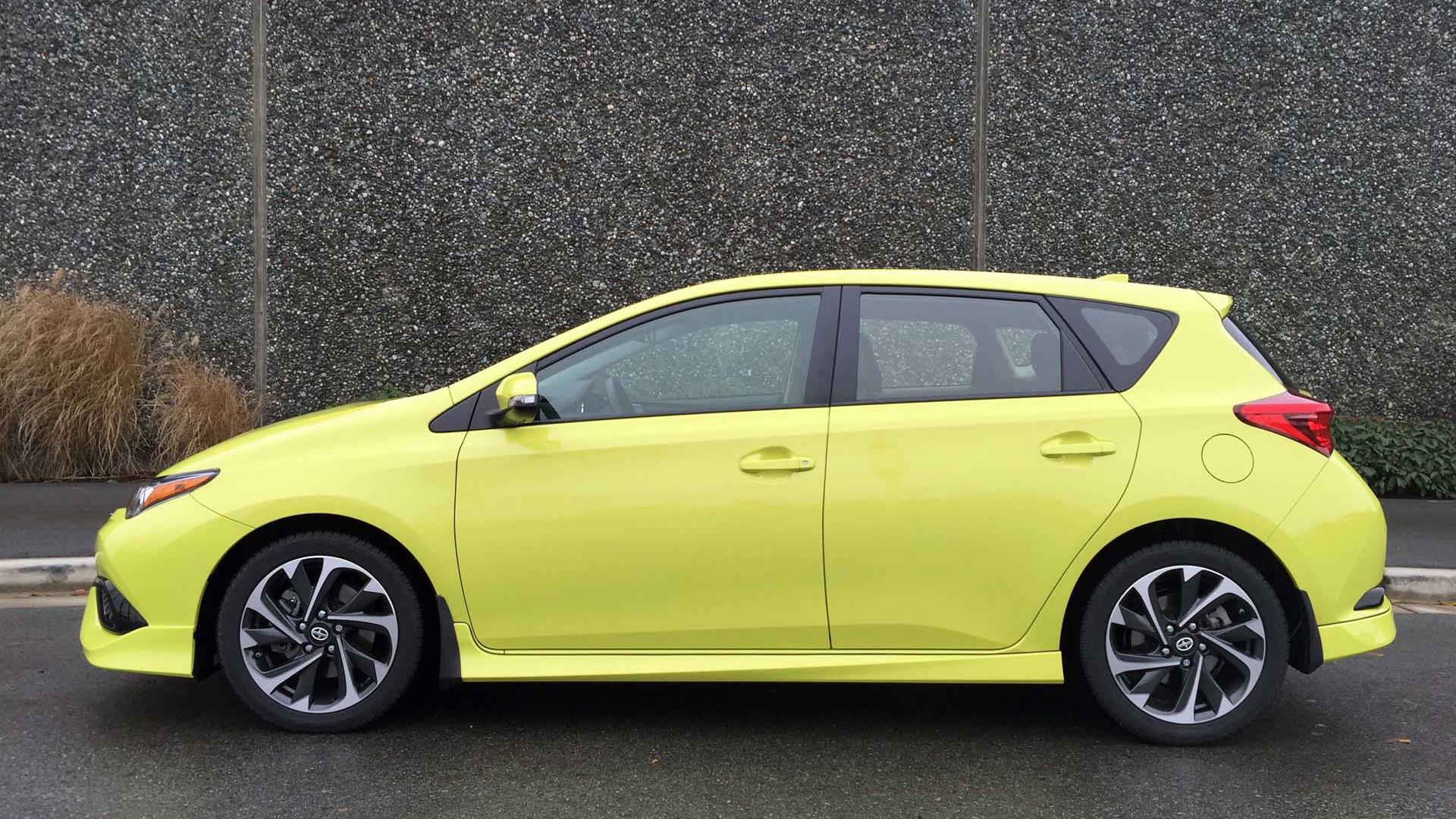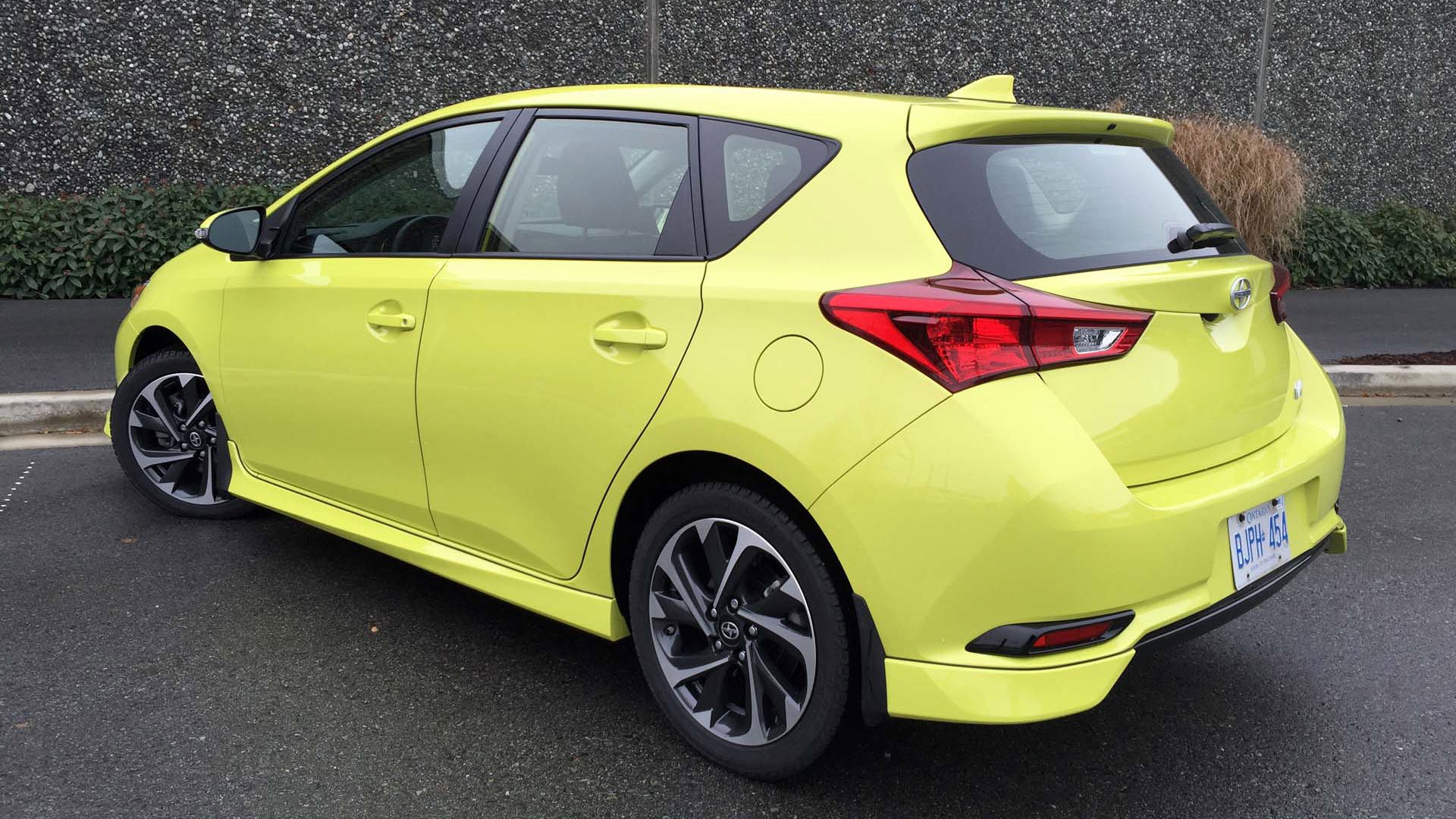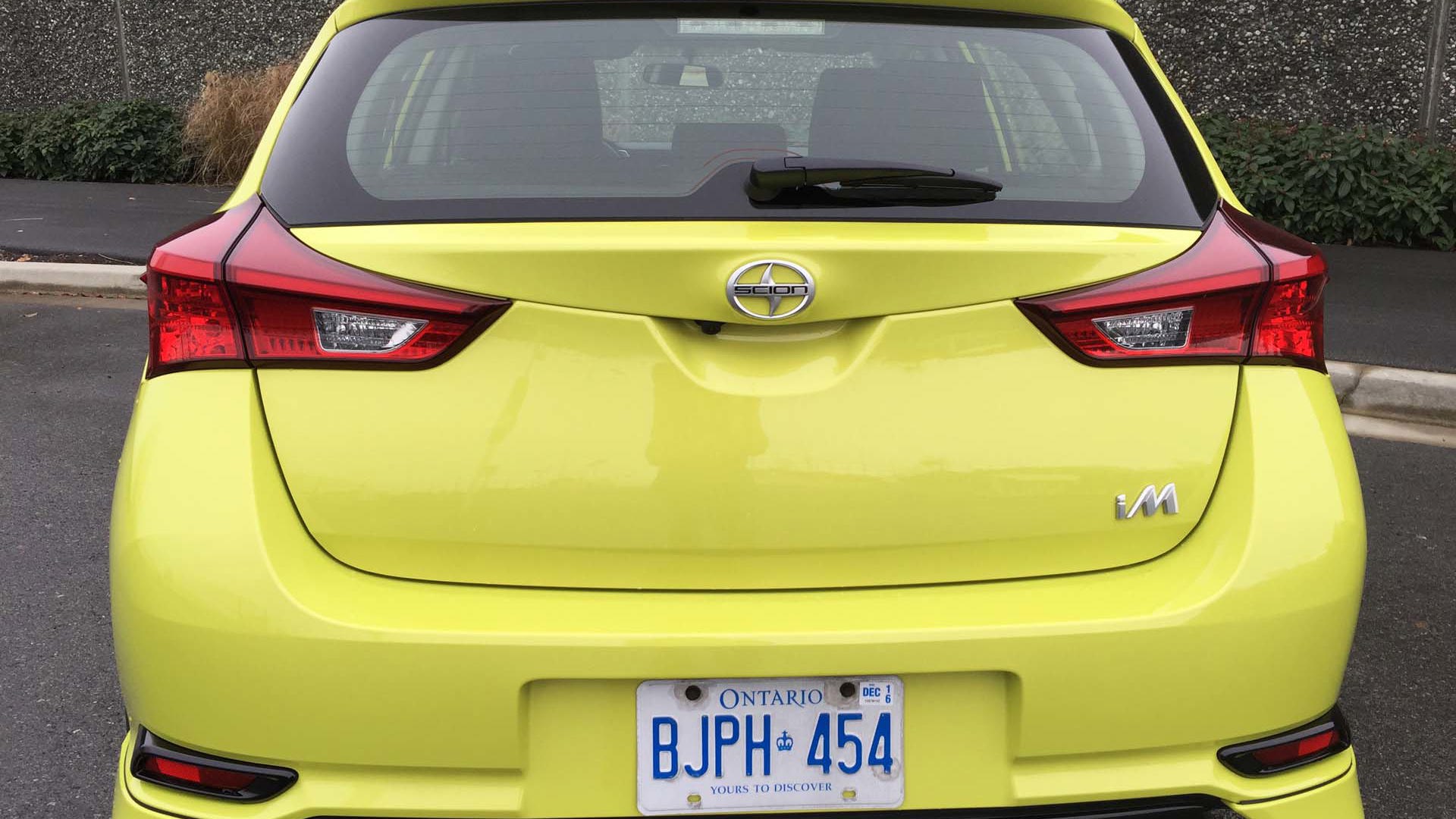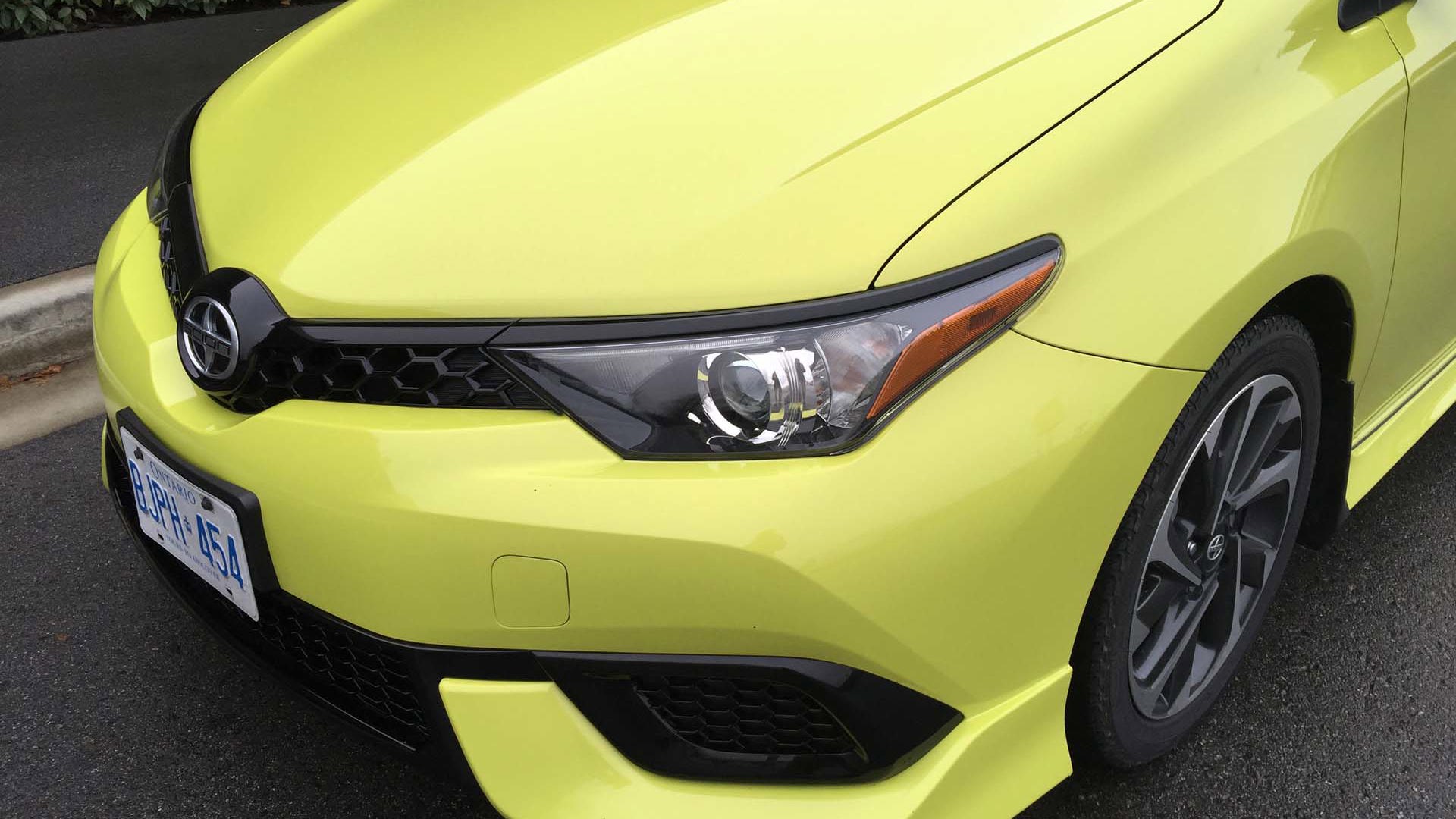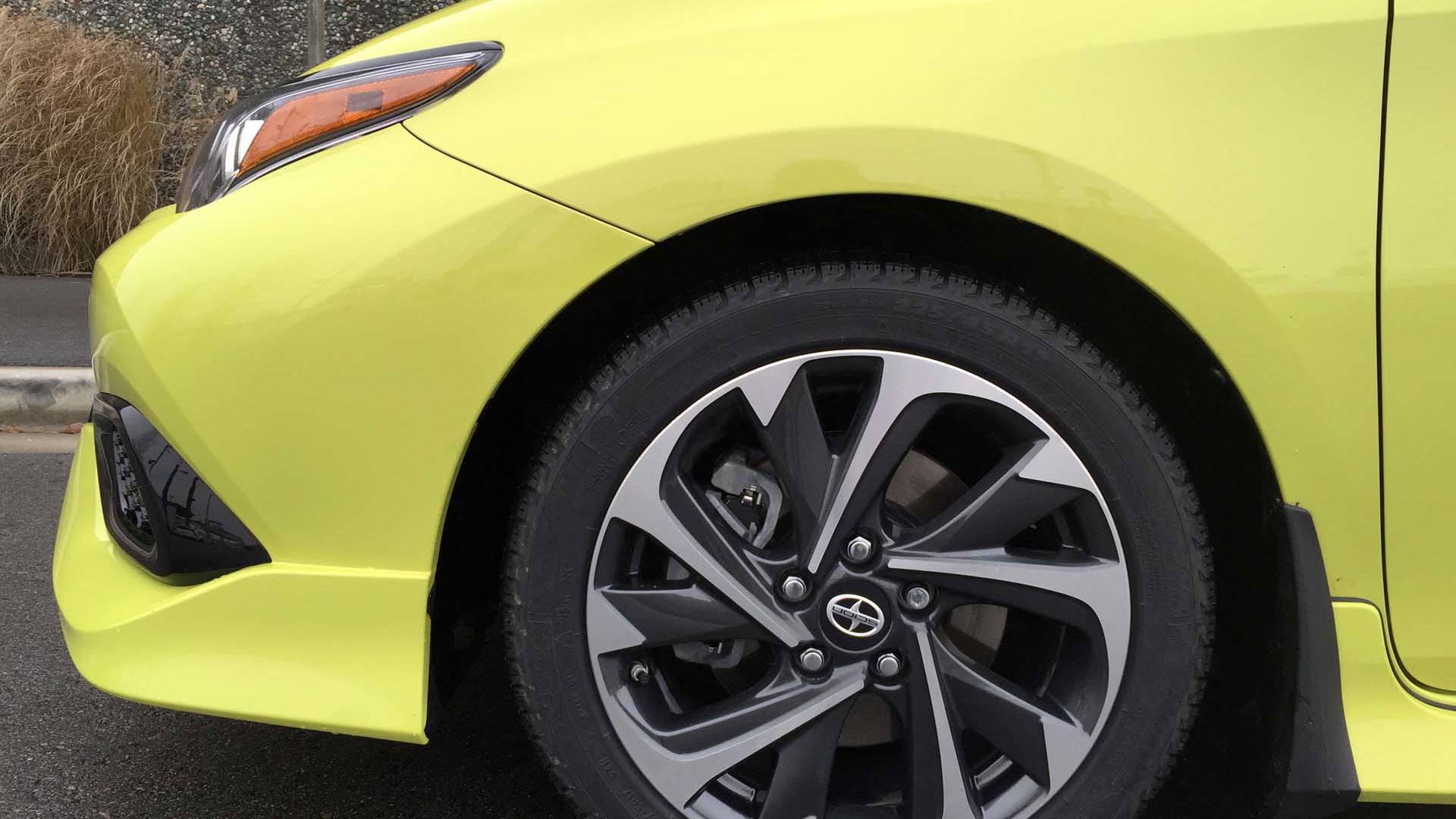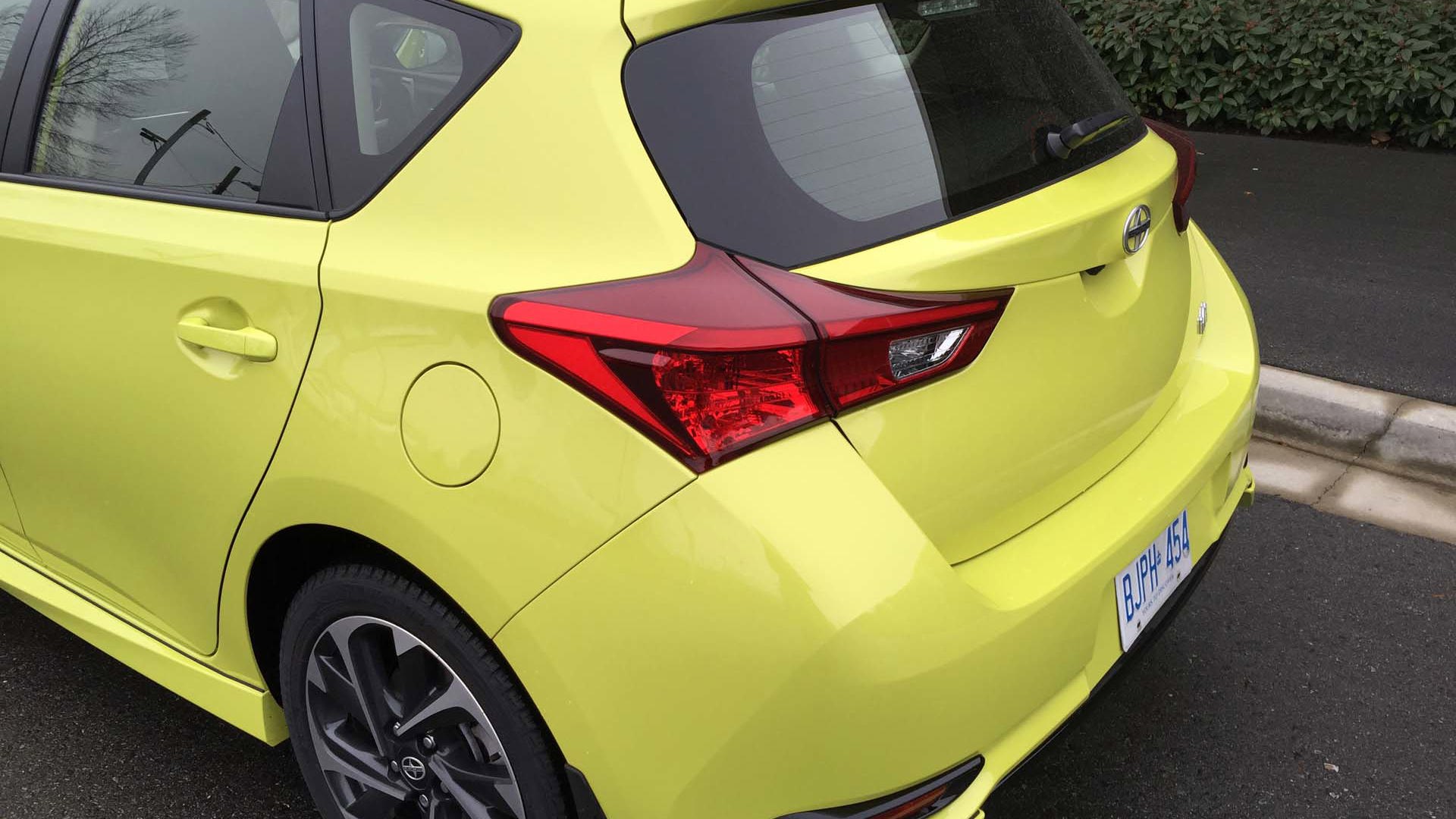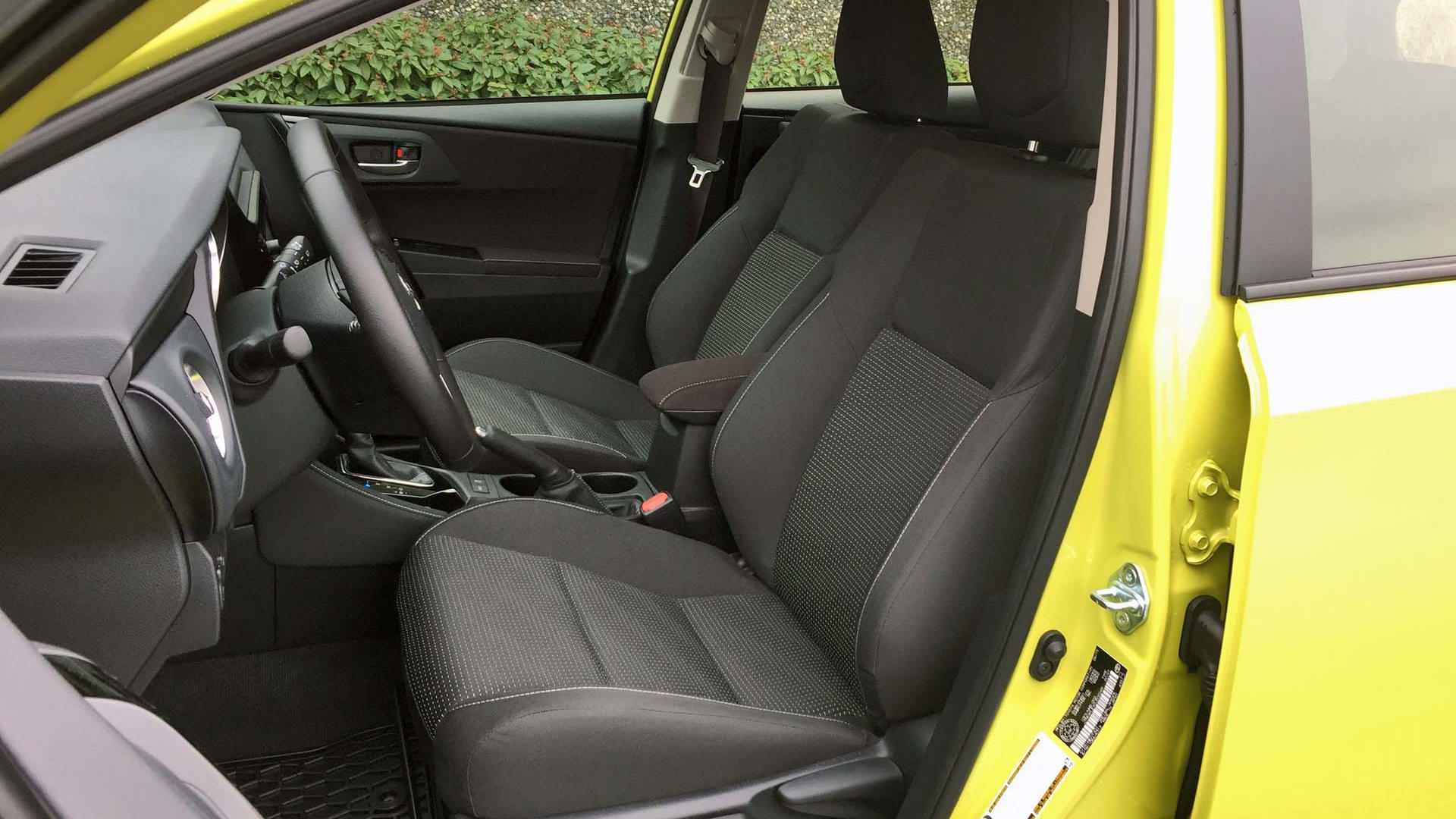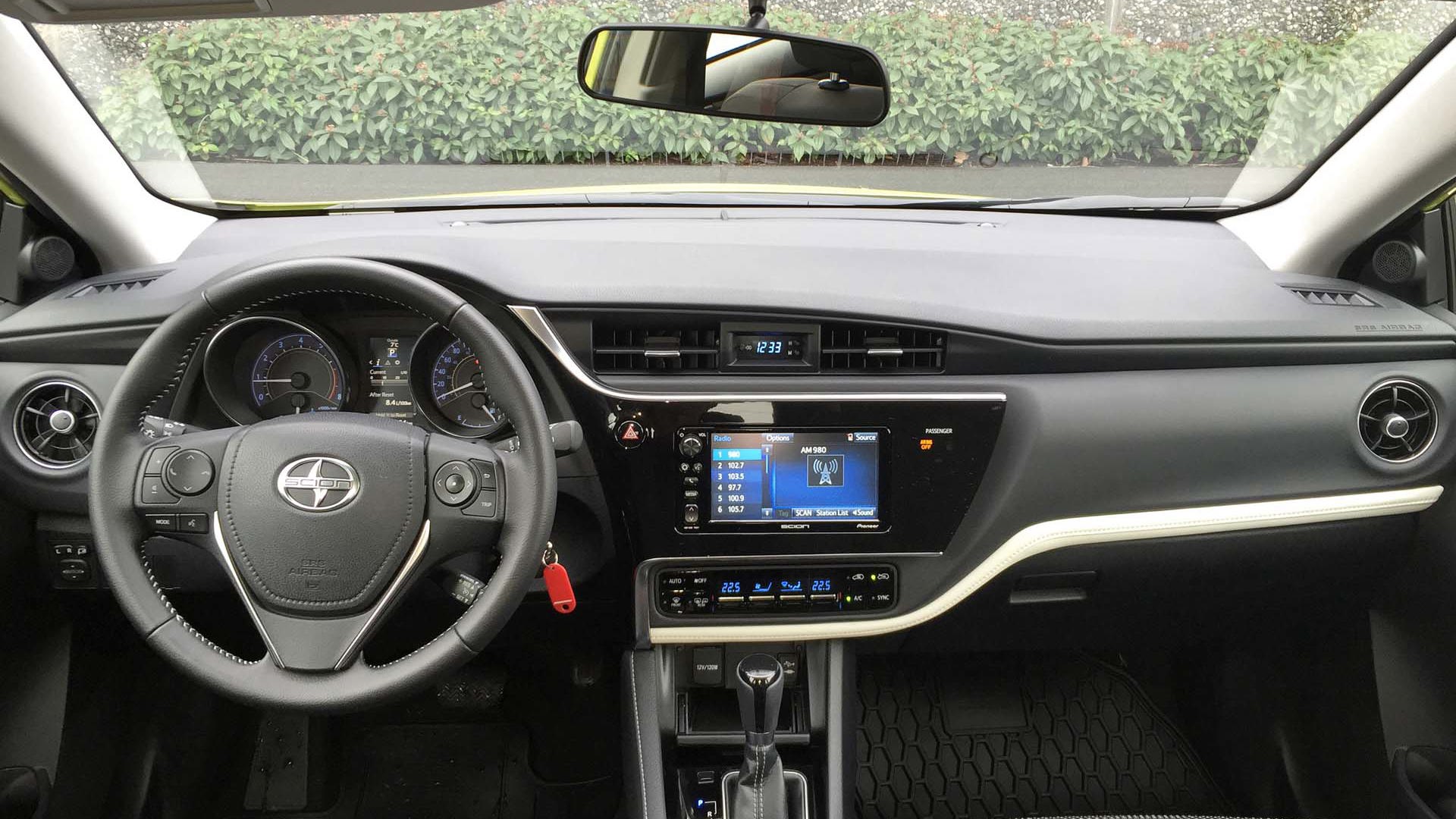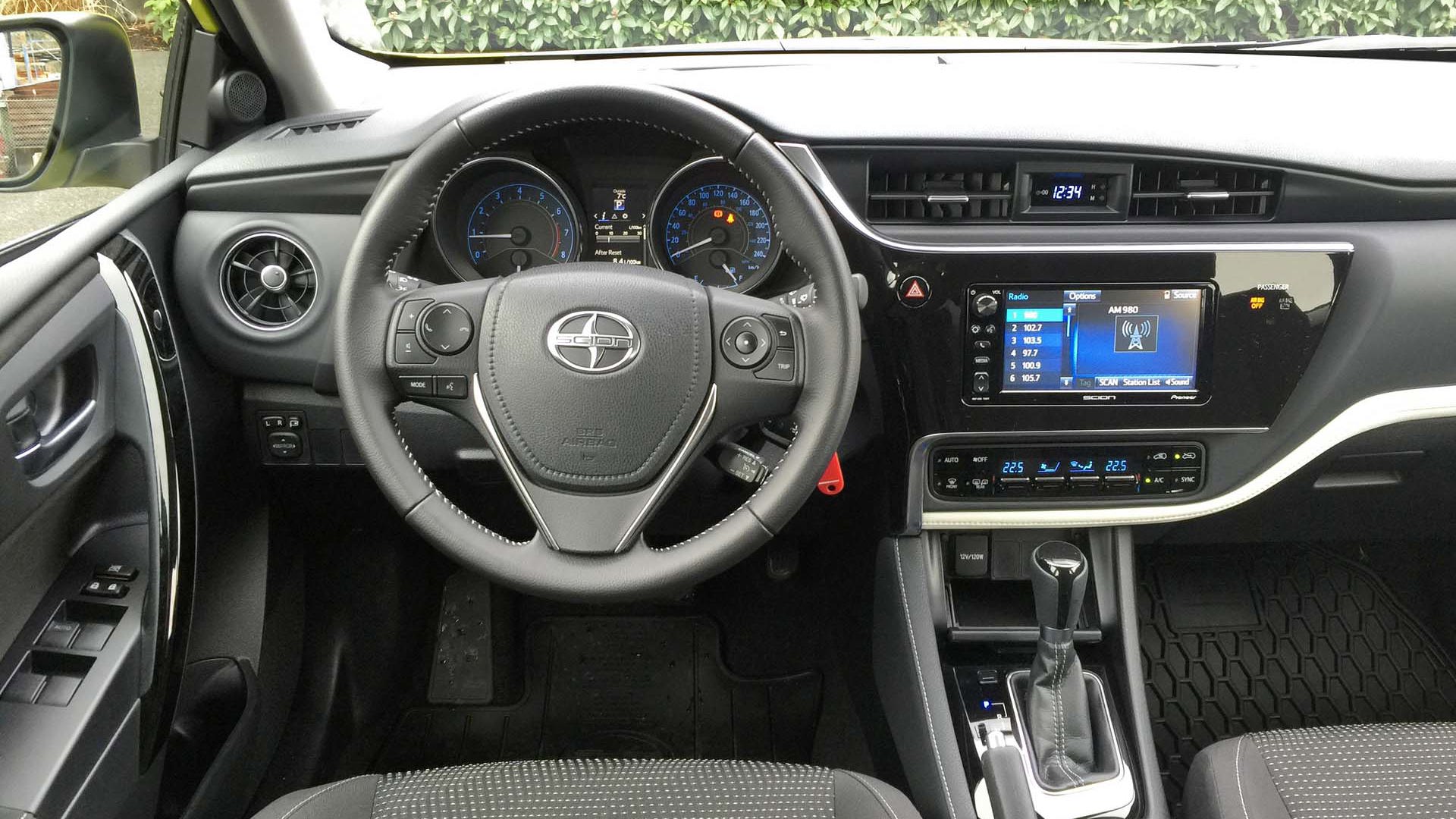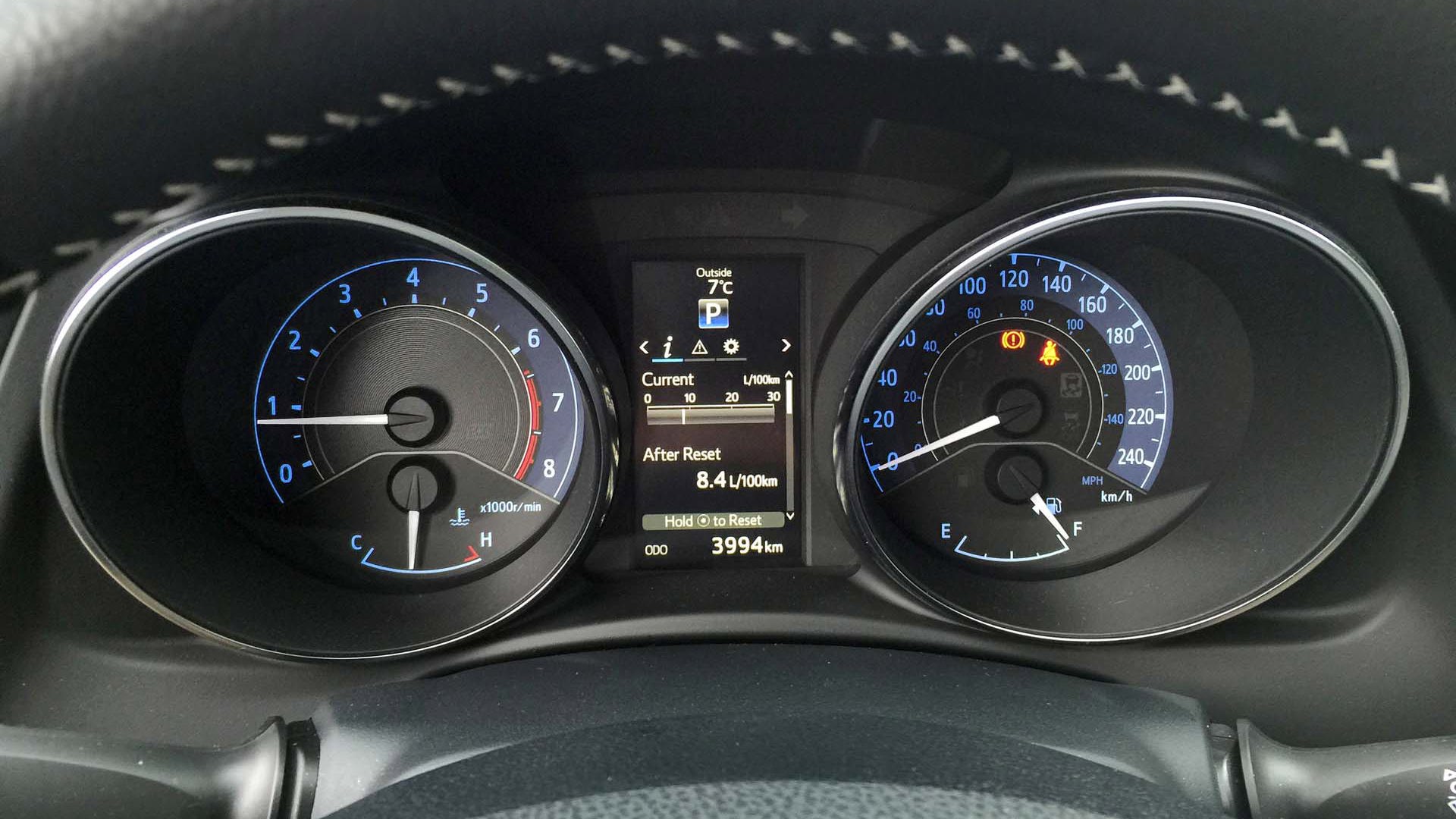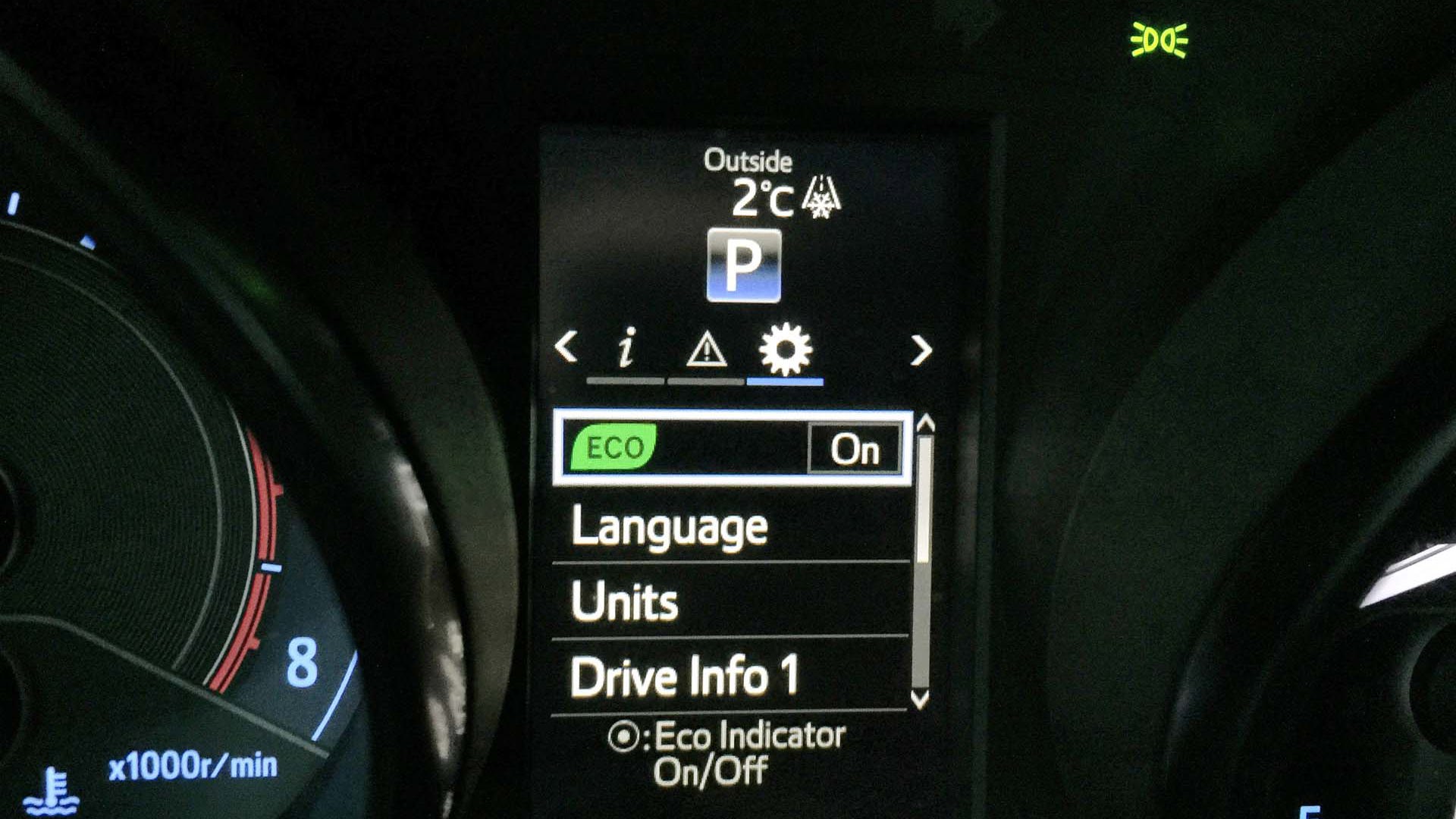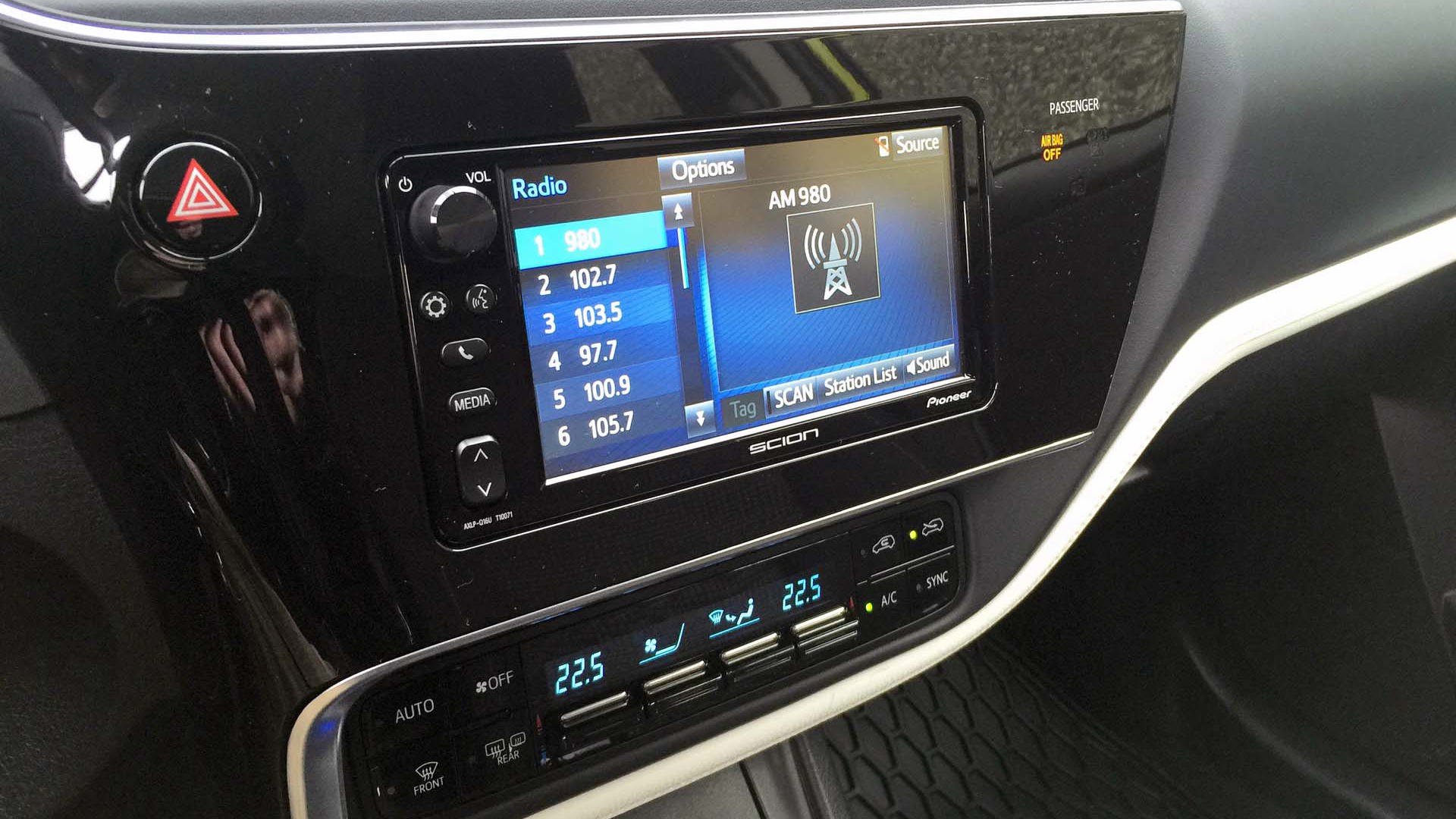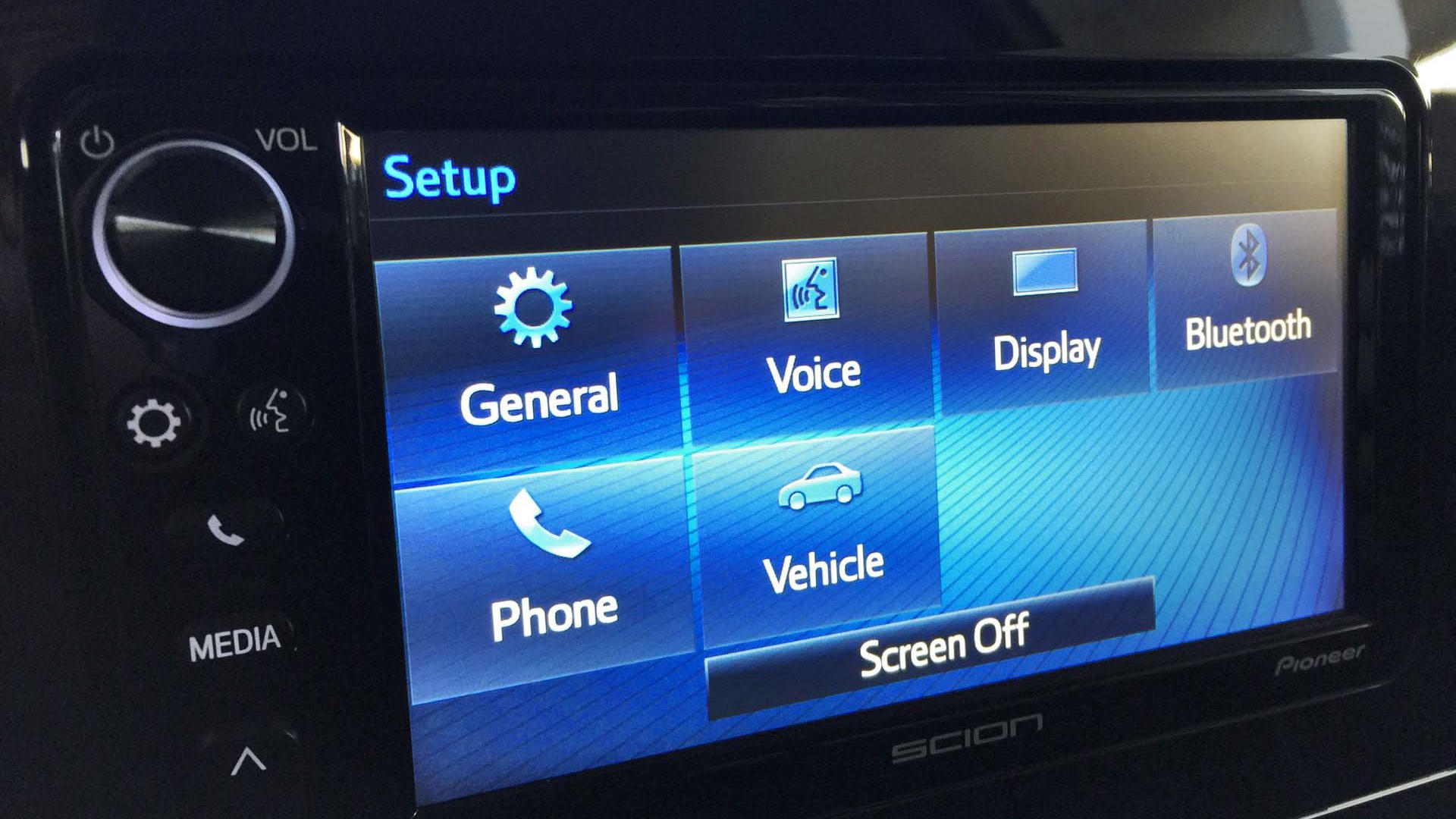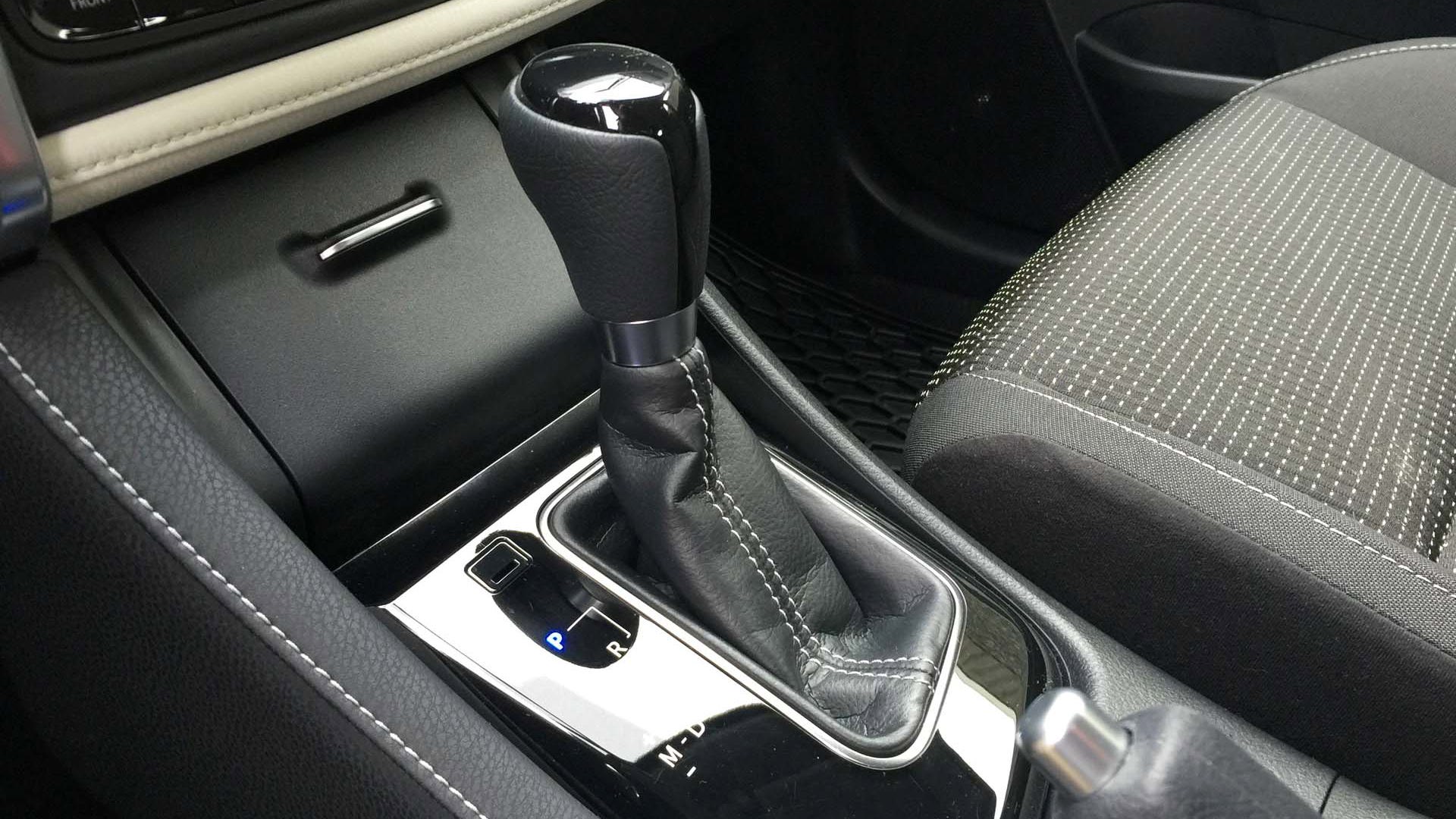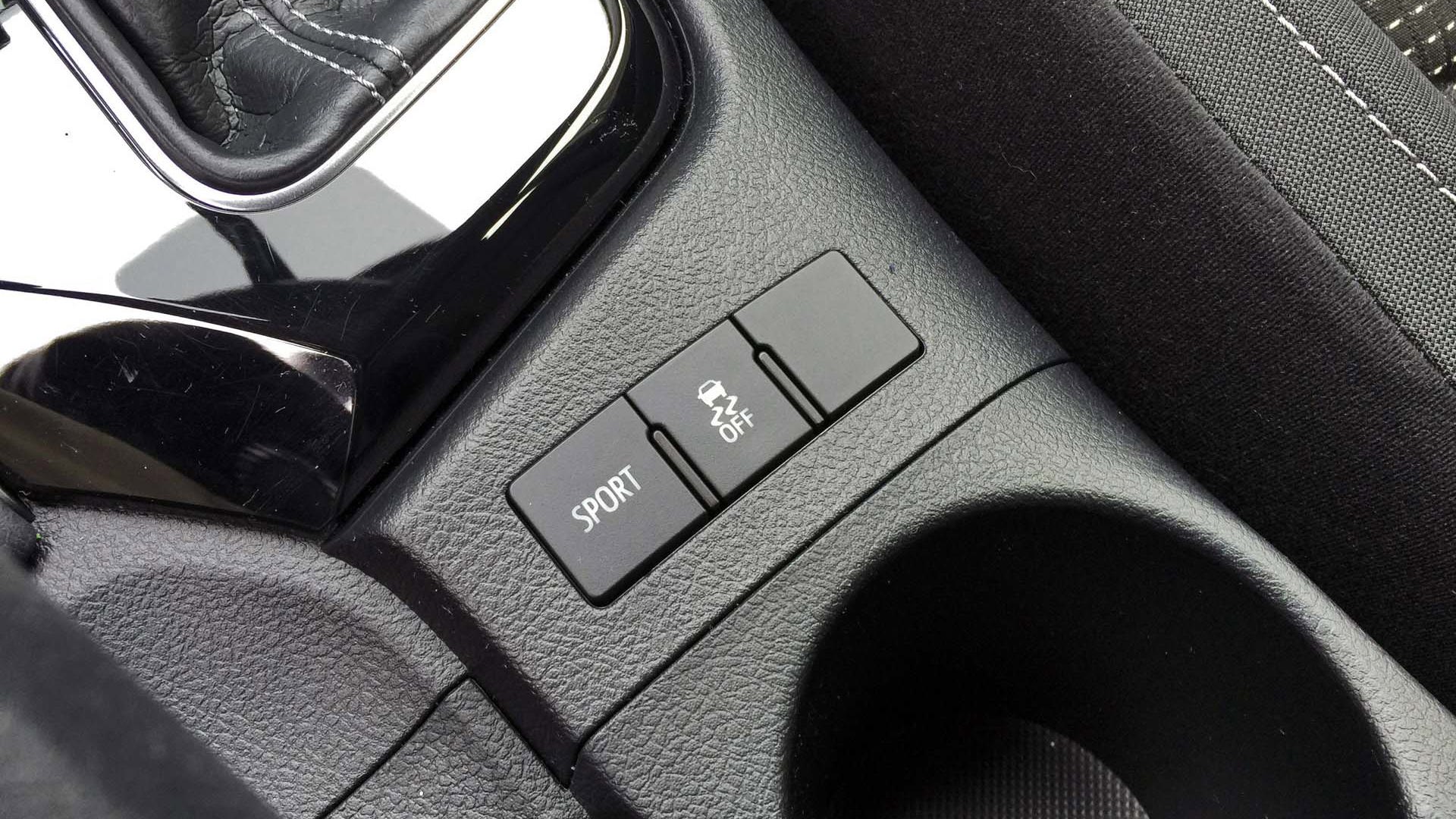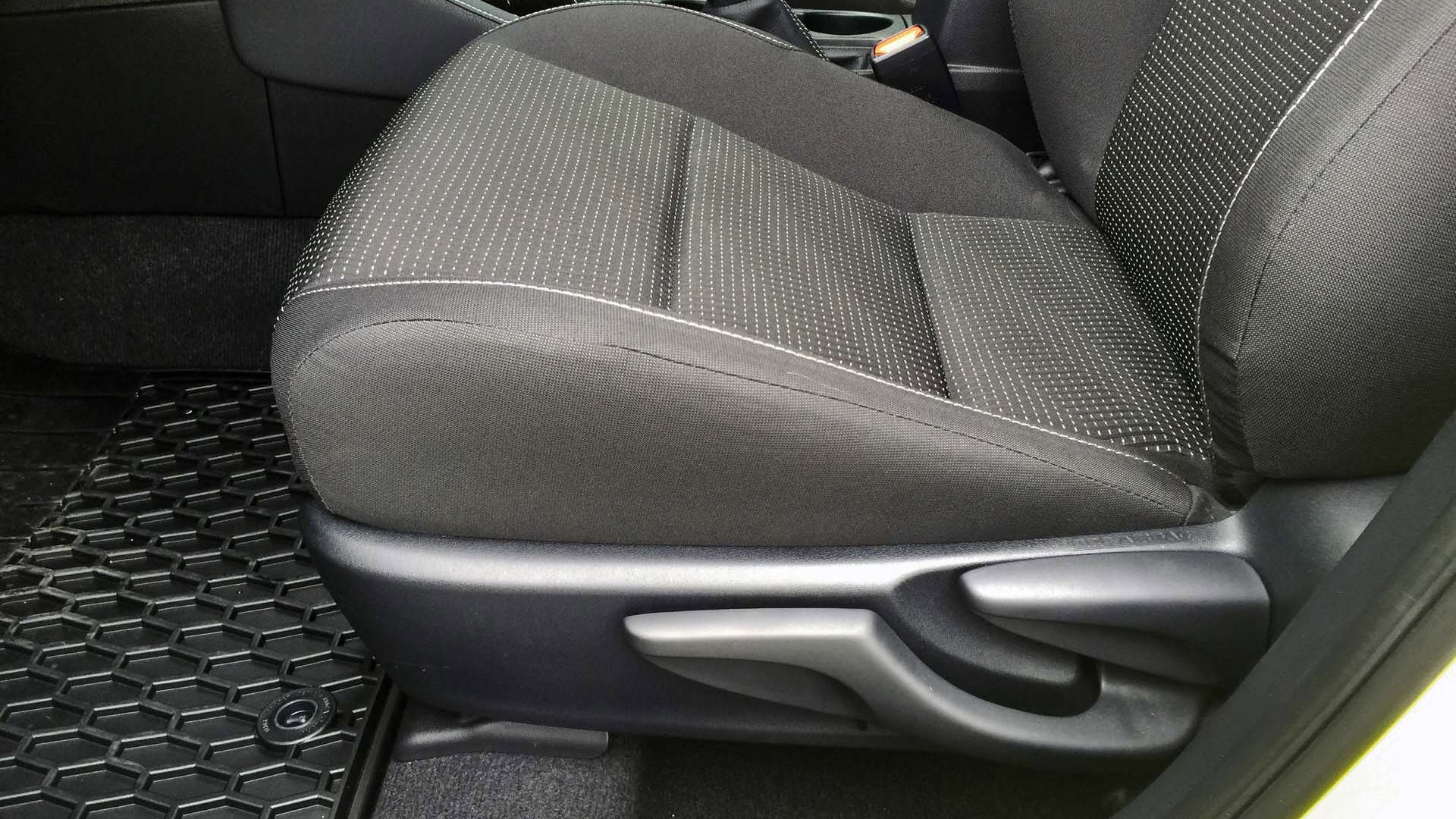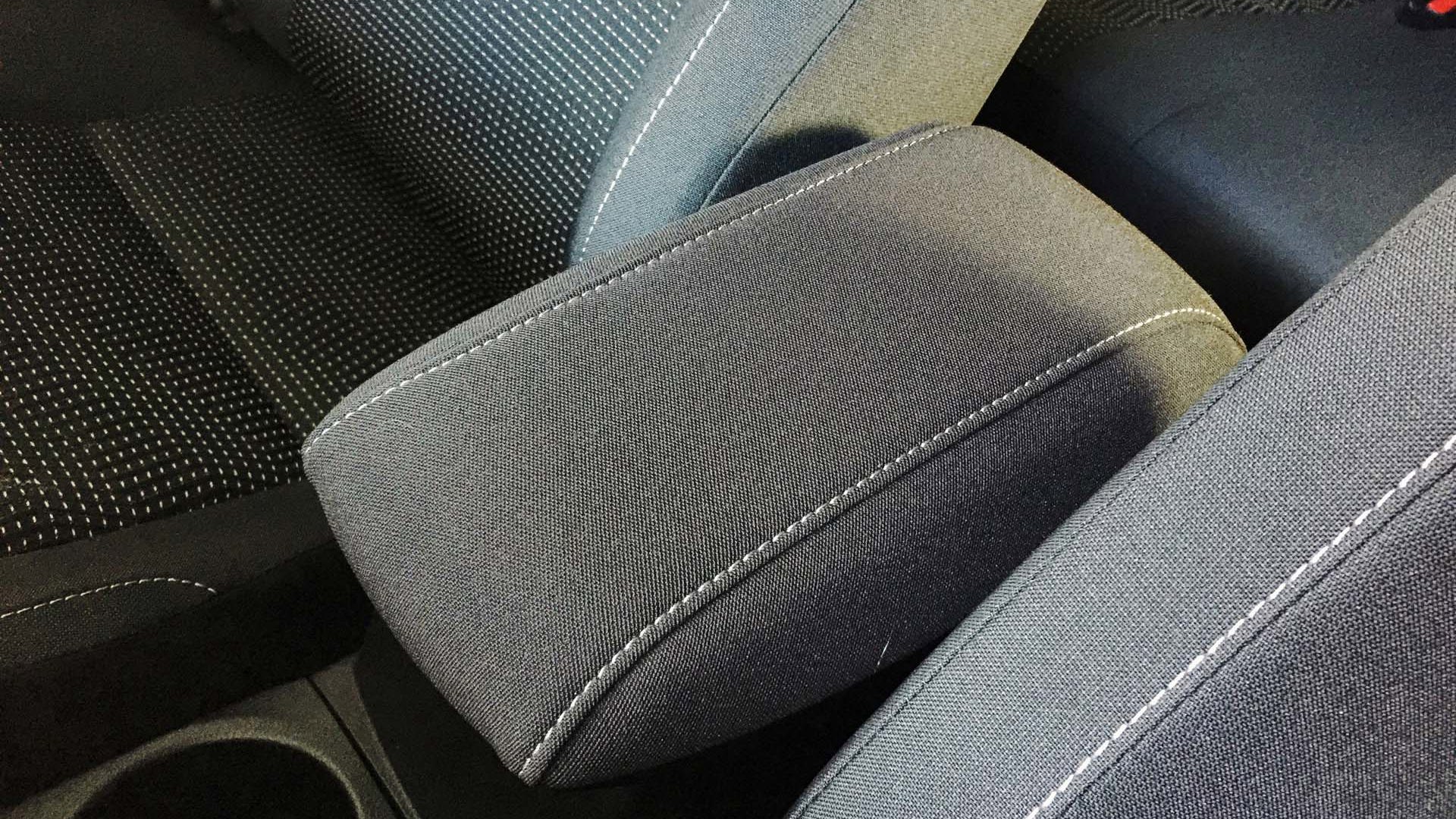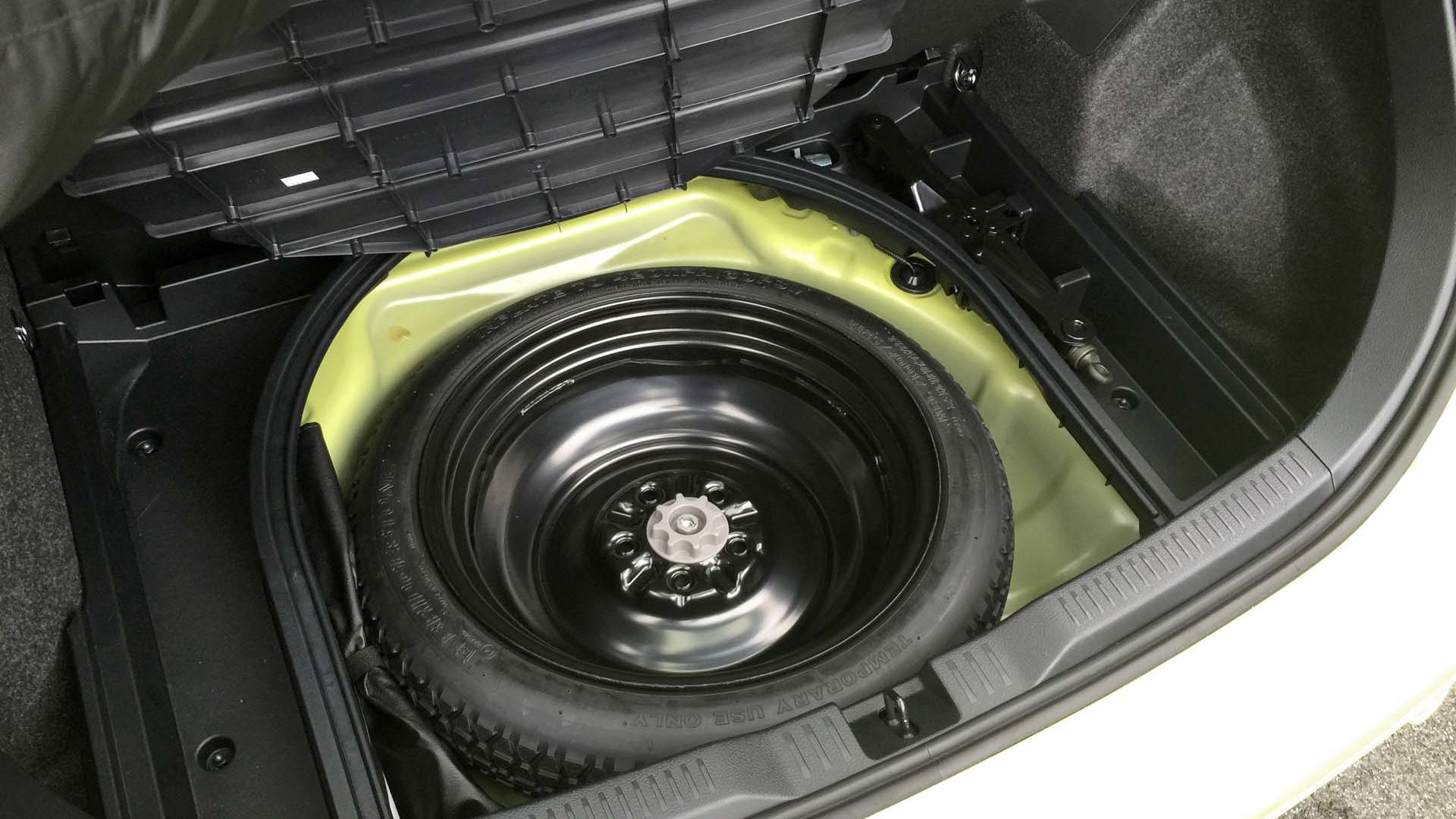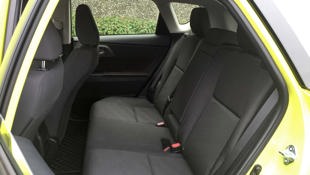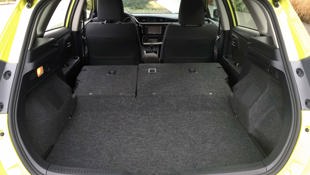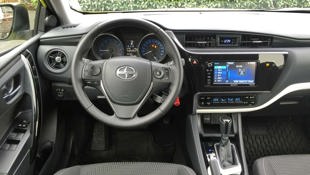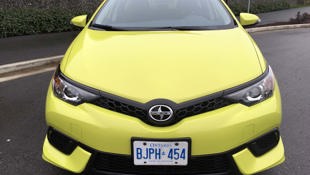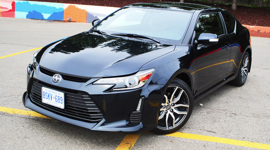 AutoTrader SCORE
AutoTrader SCORE
-
EXTERIOR STYLING7/10
-
INTERIOR7/10
-
PERFORMANCE6/10
-
COMFORT7/10
-
FUEL ECONOMY7/10
Scion has axed three of its hatchbacks recently: the compact xB, subcompact Scion xD, and the tiny iQ. What went wrong? It might have been the competition or perhaps it was due to Scion’s small Canadian dealer network, but in my opinion the blame lies with their styling: the tall, boxy styling of the xB and the smaller xD failed to resonate with Canadian buyers while the iQ’s oddball styling had few fans.
What iM stands for is a bit of a mystery: Scion has said it could mean ‘individual’ or ‘integrity’ and ‘Modern’ or ‘Multi-faceted’ but there appears to be no official consensus. I’m voting for ‘in the Money’.
Fortunately, Toyota’s overseas division had a stylish replacement for the xB: the Corolla-based Toyota Auris hatchback that’s already sold in Japan and Europe (and known as the Toyota Corolla hatchback in Australia and New Zealand). For the North American market, Toyota/Scion gave it more aggressive front and rear fascia, equipped it with a North American-spec 1.8L four-cylinder engine and choice of manual or CVT transmissions, loaded it up with many standard popular features, and called it the iM.
What iM stands for is a bit of a mystery: Scion has said it could mean ‘individual’ or ‘integrity’ and ‘Modern’ or ‘Multi-faceted’ but there appears to be no official consensus. I’m voting for ‘in the Money’.
Though the iM’s styling is certainly not revolutionary, it successfully combines a sporty, rakish look with the practicality of a four-door hatchback. To add some spice, all iMs come with a black honeycomb mesh grille, body-coloured rocker panels, rear roof spoiler, chrome exhaust tip, and 17-inch machined alloy wheels. It’s refreshing to see the complete absence of any exterior chrome trim; all of the exterior trim is black. It’s also nice to see a new hatchback that’s available in variety of vibrant colours such as ‘Electric Storm Blue’, ‘Barcelona Red Metallic’, ‘Blizzard Pearl’ and our test car’s ‘Spring Green’ which seemed to us more like ‘Luminous Yellow’. Indeed, if I’d put a “Taxi For Hire” sign on the roof, I could have made some extra money last week.
With a manufacturer’s suggested retail price of $21,165 with six-speed manual transmission, and $21,990 with a Continuously Variable Transmission (CVT) that includes a seven-step manual shift mode, the 2016 Scion iM is priced competitively with other compact hatchbacks (when comparably equipped) such as the Mazda3 GS ($22,150), Hyundai Elantra GT GL ($21,249), Ford Focus SE ($19,599) and the Kia Forte LX+ six auto ($20,695), Subaru Impreza 2.0i CVT ($22,195), and VW Golf 1.8 TSI Trendline six auto ($22,295).
But though it’s about the same length as its major competitors, the iM’s wheelbase (2,600 mm) is between 37 and 100 mm shorter than its competitors. It’s also lower in height and narrower in width than key competitors. As a result, the iM cabin’s passenger volume (2,560 L) is smaller than most: Mazda3 (2,730 L), Hyundai Elantra GT (2,718 L), Kia Forte (2,780 L), Subaru Impreza (2,763 L) and VW Golf (2,647 L).
Turbodiesel iM? Toyota Future Products: Mirai, i-Road, turbo engines, Autonomous Lexus
Despite this, the iM’s cabin doesn’t feel cramped, at least for four adults: five may be pushing it. The door openings are big and it’s easy to get in and out of. There’s plenty of headroom and ‘sitting behind myself’ in the rear, I had two or three inches of kneeroom and plenty of footroom under the front seat.
The interior design which includes a tall, flat-topped instrument panel is similar to the Corolla sedan’s, but includes a new seven-inch centre touchscreen, standard dual-zone climate control, sportier-looking black fabric seats with white speckled inserts, more piano-black trim on the dash, and a contrasting stripe along the bottom of the dash.
Standard equipment in the iM includes power door locks with keyless entry, power windows with driver’s side automatic-down function, automatic headlights, and power folding heated outside mirrors. A sunroof/moonroof is not available.
The iM’s front seats have generous thigh and side bolsters for lateral support and the driver’s seat has a manual height adjuster – the front passenger seat does not. Neither front seats are available with seat heaters, but a least the standard fabric material is warmer than leather might be (which isn’t available). The rear seats are firmer than the front seats but not uncomfortable. The iM’s cabin includes niceties such as a stitched, leather-wrapped steering wheel and shift boot, padded centre armrest, padded door armrests, and large grab handles for the doors. Something I’ve never seen before is padding on the left side of the centre console to protect the driver’s right knee; there’s no padding on the right side.
Behind the steering wheel, the speedometer and tachometer are nicely illuminated with blue backlighting. Between them, a 4.2-inch colour digital display provides driver information such as outside temperature, gear selection, audio status, and Eco on/off mode. You can also access average and current fuel consumption by pressing the Trip button on the steering wheel.
The centre touchscreen includes a conventional round dial for radio volume and hard buttons for voice activation, phone, media, tune, and settings, but most other functions, including media choice, station select, phonebook list, Bluetooth audio and vehicle settings, are operated using the touchscreen. The touch-sensitive screen requires a firm push with your finger and the icons are big enough to zero in on without hitting the wrong icon.
The driver can also adjust the radio volume, select a media source, or make a voice-activated phone call using buttons on the steering wheel. You can slide your smartphone in the narrow slot at the bottom of the centre stack where it can connect to the 12 volt, USB or auxiliary ports above it.
But here’s what technological progress means: no CD player, no Sirius/XM satellite radio, and no integrated Navigation system! The iM has a standard Pioneer AM/FM radio with wireless Bluetooth audio capability and six speakers that offer decent sound quality. Optional is a Premium Display Audio System with Navigation ($1,088) that uses the Aha app downloaded onto your smartphone from iTunes or Google Play. Any internet-sourced Aha feature that can be streamed from your phone (navigation, music, news, weather, business, Facebook, Twitter, etc.) can be operated through the touchscreen in the centre console. The downside is that you’ll be using your phones data minutes to access these services, so extra charges may appear on your phone bill.
The iM is also available with a dealer installed Bongiovi Acoustics DPS digital audio system ($385) with a four-channel digital amplification system. It’s reputed to improve the sound of any audio source that you might use (radio, Bluetooth audio, etc.). Our test car didn’t have it so we can’t comment.
Goodbye Scion: Confirmed: Toyota to kill Scion
As far as I know, the iM is the only car in its class with standard dual-zone automatic climate control. Just below the touchscreen, the climate control has its own little screen to display temperature, fan speed and ventilation choices. Driver and front passenger can select their own temperature settings and the automatic system will take care of everything else.
Between the front seats is a padded armrest but it’s a bit far back to comfortably rest your right arm.
The lid lifts up to reveal a shallow tray for coins or phones and this tray lifts out to reveal a deep storage bin, about 4x4x6-inches.
Cargo volume behind the iM’s rear seats (588 L) is less than comparable hatchbacks including the Ford Focus (674 L), Hyundai Elantra GT (651 L), Kia Forte (657 L), Impreza (638 L) and VW Golf (645 L). However, there’s more room behind the rear seats than in the popular Mazda3 hatchback (572 L). Scion doesn’t provide a cargo volume figure with the rear seatbacks lowered but it’s probably less than these competitors too.
Still, how much cargo space do you need in a compact car? Unless you’re hauling a grand piano to Danforth Music Hall, there’s plenty of room for all the groceries, hockey gear, ski equipment, gardening supplies that you’re likely to need. Standard split 60/40 folding rear seatbacks make it possible to transport two rear passengers on one side and long items, like skis and garden rakes, on the other. All the load surfaces, including the sidewalls, are covered in a protective lining, and a removable privacy cover is also standard. Under the cargo floor is a shallow storage tray where tools, booster cables, cleaning materials and the like can be kept hidden. Underneath the tray is a temporary spare tire.
The iM is powered by Toyota’s 1.8L DOHC 16-valve four with continuously variable valve timing (borrowed from the Corolla) that makes a rather conservative 137 hp at 6,100 rpm and 126 lb-ft of torque at 4,000. It’s enough power to provide adequate performance: Consumer Reports quotes a 0 to 60 mph time of 10 seconds with the optional continuously variable transmission (CVT). That’s within a second of competitors like the Elantra, Focus and Impreza. Still, all of the Scion’s competitors have larger 2.0L engines (except the 1.8L Elantra and turbocharged Golf) with more horsepower and torque: Impreza 148/145, Mazda3 155/150, Focus 160/146, Golf 170/200, Elantra 173/154, Forte5 173/154.
Equipped with the CVT, the iM’s engine can be noisy under hard acceleration due to suspended engine revving caused by the CVT’s operation. Under gentle acceleration, the iM’s CVTi-S tries to mimic a conventional automatic transmission with seven artificial shift points that cause engine noise to rise and fall like a normal transmission, but under full throttle the engine maintains a sustained rev and noise level. Highway engine noise levels, however, are minimal. Toyota says the iM has extensive sound insulation in the body and floor and an acoustic-layer windshield.
By pressing the Sport button on the centre console, the CVTi-S delays shift points to improve throttle response. It even detects lateral G forces to prevent unnecessary shift changes while cornering. It also stiffens up the steering slightly. The driver can also shift manually (sequentially) using the floor shifter; gear selections are displayed in the instrument cluster. Manual shifts are quick and help improve the performance, but if you want to shift manually, the standard six-speed manual transmission would likely be a better choice (although I haven’t tried it).
Fuel economy is comparatively good: with the optional CVT, the Scion iM’s NRCan fuel consumption ratings are 8.3 city/6.3 hwy/7.4 combined, slightly better than the iM equipped with a manual transmission. That’s better than the Ford Focus (9.2/6.6), Hyundai Elantra (9.8/7.2), Kia Forte (9.5/7.2) Subaru Impreza (8.5/6.4), VW Golf (9.3/6.5), but not quite as good as the Mazda3 (8.0/5.9).
Though it’s not especially quick in a straight line, the iM handles quite well thanks to a fully independent suspension (front Macpherson struts and rear double-wishbones). Body lean is minimal when cornering at speed and the ride is firm but not punishing when traversing expansion gaps and road repairs. We found the ride to be quite comfortable on the highway. Our test car had 225/45R-17-inch Michelin X-Ice winter tires which gripped well on Vancouver’s cold, rainy roads in January. At its limit, the iM tends to understeer gently but is easily controllable.
The iM’s electronic power steering requires minimal effort, erring on the side of comfort rather than precision. The car’s turning diameter of 11.4 metres is acceptable. Disc brakes at all four wheels provide quick, stable stops; the iM comes standard with anti-lock brakes, traction and stability control to help prevent skidding and spin-outs on slippery surfaces.
The driver’s visibility to the front and sides is good but the two outboard rear head restraints obscure some of the rear view. As well, the rear window can get very dirty from spray being thrown up during bad weather. Fortunately, the rear window includes a wiper with a variable intermittent wipe setting and a washer. As well, the iM comes standard with a rearview camera which displays an image of the area behind the car when the gear lever is in Reverse.
Standard safety equipment includes eight airbags, five three-point seat belts, five head restraints, and rear child seat tethers and anchors.
With its sporty looks, practical hatchback bodystyle, fuel-efficient engine, affordable price-tag, and assumed Toyota reliability, the Scion iM has a lot to offer - but don’t mistake it for a hot hatch, because it’s not.
Scion iMs sold in Canada are built in Toyota City, Aichi, Japan.
| Warranty: 4 years/100,000 km; 6 years/110,000 km powertrain; 7 years/unlimited distance corrosion perforation; 4 years/100,000 km roadside assistance Competitors: |
| Model Tested | 2016 Scion iM |
|---|---|
| Base Price | $21,165 |
| A/C Tax | $100 |
| Destination Fee | $1,695 |
| Price as Tested | $23,785 |
|
Optional Equipment
$825 (continuously variable transmission)
|
|


